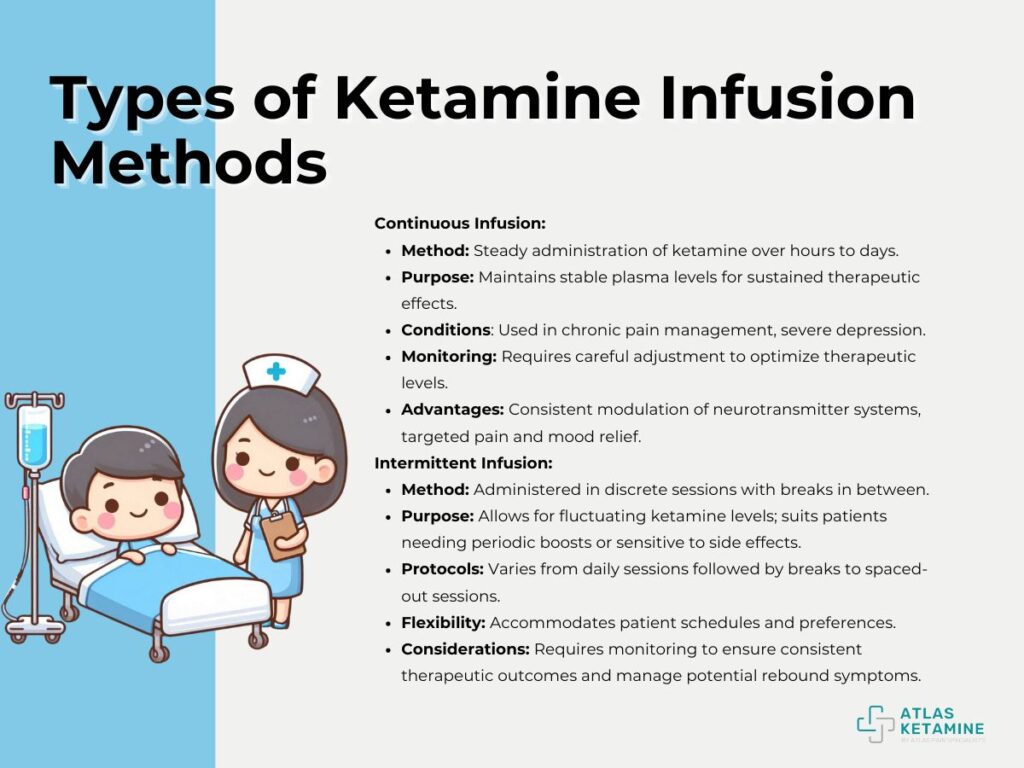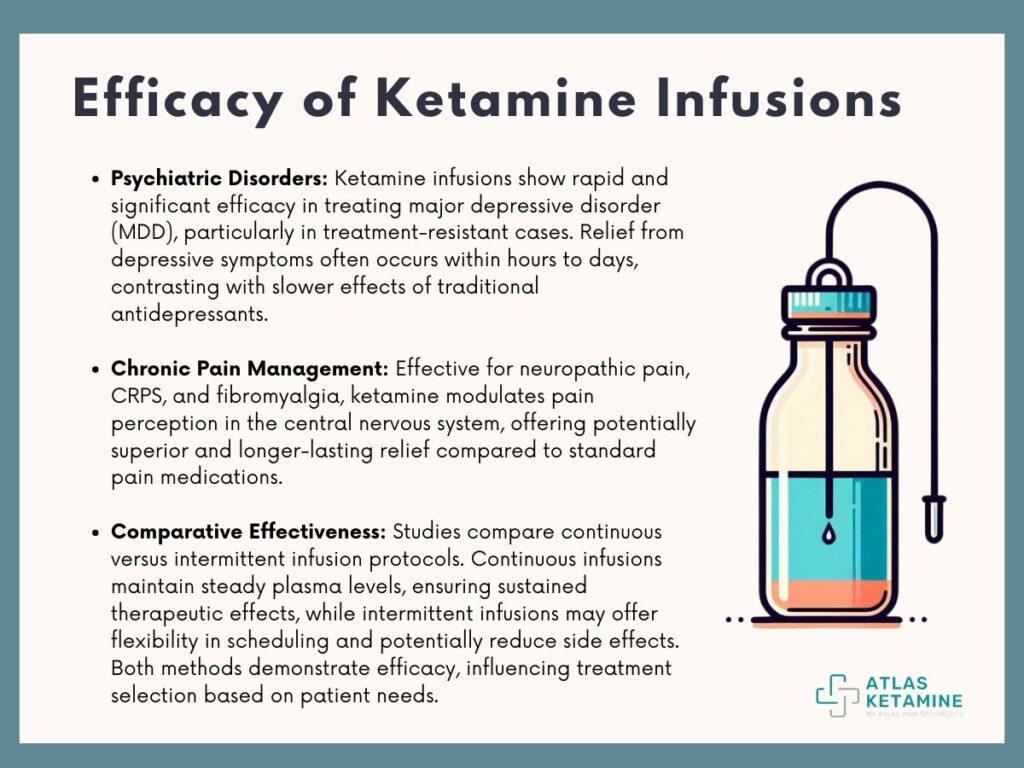Ketamine, once primarily known as a dissociative anesthetic in medical settings, has emerged in recent years as a promising treatment for a variety of psychiatric and chronic pain conditions when administered in controlled doses via infusion. This powerful drug works uniquely in the brain, targeting the N-methyl-D-aspartate (NMDA) receptors and influencing neurotransmitter pathways associated with mood regulation and pain perception.
Ketamine infusions involve the careful administration of the drug intravenously, allowing for precise control over dosage and delivery, which is crucial for its therapeutic effectiveness. Unlike traditional oral medications that may take weeks to show noticeable effects, ketamine infusions often produce rapid and profound results, sometimes within hours or days of treatment initiation.
This rapid onset of action makes it particularly valuable for individuals suffering from severe depression, treatment-resistant psychiatric disorders, or debilitating chronic pain where conventional therapies have fallen short. Let's delve into understanding the science of Ketamine Infusions.
What are Ketamine Infusions?
Ketamine infusions are a specialized medical treatment involving the controlled administration of ketamine, a potent dissociative anesthetic and analgesic drug, via intravenous (IV) delivery. This method allows for precise regulation of dosage and a rapid onset of therapeutic effects, making it particularly advantageous for conditions such as treatment-resistant depression, chronic pain syndromes, post-traumatic stress disorder (PTSD), and certain neurological disorders.
Unlike oral medications that undergo extensive metabolism in the liver before reaching systemic circulation, ketamine administered intravenously bypasses the first-pass metabolism, ensuring more predictable pharmacokinetics and bioavailability.
Why is Ketamine Administered via Infusion?
Ketamine infusions are preferred over other routes of administration like oral or intramuscular due to several key reasons.
- Intravenous administration ensures a rapid and controlled onset of action.
This is critical for managing acute symptoms such as severe depressive episodes or acute pain crises. This method allows healthcare providers to adjust the infusion rate and dosage in real-time, tailoring treatment to individual patient responses and minimizing the risk of under or overdosing.
- Intravenous delivery of ketamine results in higher bioavailability compared to other routes.
This means a larger proportion of the administered dose reaches the bloodstream and is available for therapeutic action in the brain and body tissues.
How Ketamine Infusions Are Administered
Ketamine infusions are typically administered in a clinical setting, such as a hospital outpatient clinic or specialized ketamine infusion center, under the supervision of trained medical professionals.
The process begins with the placement of an intravenous catheter, usually in the arm or hand, through which the ketamine solution is slowly infused. The infusion rate and duration can vary depending on the specific protocol designed by the treating physician, the patient's condition, and their response to previous treatments.
The infusion itself is generally well-tolerated, with patients typically reclining comfortably during the procedure. Vital signs such as heart rate, blood pressure, and oxygen saturation are closely monitored throughout the infusion to ensure safety and efficacy.
Types of Ketamine Infusion Methods
Ketamine infusion therapy encompasses two primary methods of administration: continuous infusion and intermittent infusion. Each method offers distinct advantages and considerations based on the patient's condition, treatment goals, and medical provider preferences.

- Continuous Infusion
Continuous infusion involves the steady administration of ketamine over a prolonged period, typically ranging from several hours to days. This method maintains stable plasma concentrations of ketamine, which is crucial for conditions requiring sustained therapeutic effects, such as chronic pain management or severe depressive disorders.
Continuous infusions are carefully monitored and adjusted to maintain optimal therapeutic levels while minimizing potential side effects. The continuous nature of the infusion allows for consistent modulation of neurotransmitter systems in the brain, specifically targeting receptors involved in pain perception and mood regulation.
Continuous infusion protocols are often tailored to individual patient responses, taking into account factors such as body weight, medical history, and previous responses to ketamine therapy. Healthcare providers may adjust the infusion rate based on observed effects and patient tolerability, aiming to achieve the desired therapeutic outcomes without inducing excessive sedation or dissociation.
- Intermittent Infusion
Intermittent infusion involves administering ketamine in discrete sessions separated by periods of rest or non-administration. Unlike continuous infusion, which maintains constant plasma concentrations, intermittent infusion allows for fluctuations in ketamine levels between sessions.
This approach may be preferred for patients who benefit from periodic boosts in ketamine's therapeutic effects or those who experience side effects with prolonged exposure. Intermittent infusion protocols vary widely and can include schedules such as daily sessions for a certain number of days followed by a break, or less frequent sessions spread over a longer period.
This method offers flexibility in treatment planning and may accommodate patient schedules and preferences. However, the variability in ketamine levels between sessions requires careful monitoring to ensure consistent therapeutic outcomes and minimize the risk of rebound symptoms or adverse reactions.
Choosing Between Continuous and Intermittent Infusions
The decision between continuous and intermittent infusion methods depends on several factors, including the nature and severity of the patient's condition, treatment goals, and medical provider expertise. Continuous infusions are typically favored for conditions requiring sustained therapeutic effects and precise control over ketamine plasma levels, whereas intermittent infusions may be considered when periodic administration aligns with patient needs and treatment objectives.
Both methods have demonstrated efficacy in clinical settings, with research supporting their use across various psychiatric and pain management indications. Healthcare providers collaborate closely with patients to determine the most suitable infusion strategy, taking into account individualized treatment plans and ongoing monitoring to optimize therapeutic outcomes while ensuring patient safety.
Mechanism of Action: How Ketamine Infusions Work
Ketamine, primarily known for its role as an N-methyl-D-aspartate (NMDA) receptor antagonist, exerts its therapeutic effects through complex interactions with various neurotransmitter systems in the brain.
- Pharmacokinetics of Ketamine
Upon administration via intravenous infusion, ketamine quickly enters the bloodstream and crosses the blood-brain barrier. The drug is metabolized primarily in the liver, where it undergoes transformation into various metabolites, including norketamine, which also exhibits pharmacological activity.
Ketamine's rapid onset of action is attributed to its ability to block NMDA receptors, thereby modulating glutamatergic neurotransmission—a critical pathway implicated in synaptic plasticity, learning, and memory processes.
- Neurobiological Effects of Ketamine
Ketamine's effects extend beyond NMDA receptor antagonism to include interactions with other neurotransmitter systems, such as gamma-aminobutyric acid (GABA), serotonin, and opioid receptors. These interactions contribute to its broad spectrum of therapeutic actions, including antidepressant effects and analgesic properties.
Ketamine infusion therapy is particularly notable for its ability to induce rapid and robust antidepressant responses in individuals with treatment-resistant depression, often within hours to days after treatment initiation.
- Synaptic Plasticity and Mood Regulation
The modulation of glutamatergic neurotransmission by ketamine is believed to enhance synaptic plasticity—the brain's ability to adapt and reorganize neuronal connections in response to experiences and environmental stimuli. Ketamine may have long-lasting antidepressant effects by facilitating neuroplastic changes in critical brain regions involved in mood regulation, such as those that promote synaptogenesis and dendritic spine formation.
This mechanism contrasts with traditional antidepressants, which primarily target monoaminergic neurotransmitter systems.
Advantages and Disadvantages of Ketamine Infusions
Ketamine infusion therapy offers distinct advantages and considerations that influence its utilization in clinical practice, addressing both therapeutic benefits and potential drawbacks associated with this treatment approach.
Advantages
1. Rapid Onset of Action: Ketamine infusions are renowned for their rapid therapeutic effects, particularly in treating severe depressive episodes and acute pain crises. Patients often experience symptom relief within hours to days after treatment initiation, offering a valuable alternative to medications with delayed onset.
2. Treatment-Resistant Conditions: Ketamine infusions are effective in managing treatment-resistant depression and other psychiatric disorders that do not respond adequately to standard treatments. This includes cases of major depressive disorder (MDD) and post-traumatic stress disorder (PTSD), where conventional therapies have limited efficacy.
3. Potential for Long-lasting Effects: Beyond its immediate effects, ketamine may induce sustained improvements in mood and pain symptoms, sometimes persisting weeks to months after treatment completion. This prolonged benefit is particularly advantageous for chronic conditions requiring ongoing management.
4. Customizable Treatment Protocols: Healthcare providers can tailor ketamine infusion protocols to suit individual patient needs, adjusting dosage, infusion rates, and frequency based on treatment response and tolerability.
Disadvantages
1. Potential Side Effects: Ketamine infusions may cause transient dissociative symptoms, such as perceptual disturbances or feelings of detachment from reality, during administration. While these effects are typically short-lived and resolve upon completion of the infusion, they can be unsettling for some patients.
2. Safety Monitoring Requirements: Due to ketamine's effects on cardiovascular and respiratory systems, continuous monitoring of vital signs—such as heart rate, blood pressure, and oxygen saturation—is essential during and immediately after infusion. This necessitates specialized clinical settings and trained medical personnel to ensure patient safety.
3. Dependency and Abuse Potential: Ketamine, like other psychoactive substances, carries a risk of misuse and dependency, particularly when administered outside controlled medical settings or at high doses.
4. Cost and Accessibility: Ketamine infusion therapy can be costly, often requiring multiple sessions to achieve desired therapeutic outcomes. Accessibility may also be limited, as specialized infusion centers may not be widely available in all geographical areas, potentially restricting patient access to this treatment option.
The Efficacy of Ketamine Infusions
Ketamine infusion therapy has garnered attention for its rapid and often profound effects in treating a range of psychiatric disorders and chronic pain conditions. across different indications and patient populations.

Clinical Applications
Ketamine infusions have shown remarkable efficacy in the treatment of major depressive disorder (MDD), particularly in cases that are resistant to conventional antidepressant medications. Studies have demonstrated that a significant number of patients experience rapid relief from depressive symptoms within hours to days after receiving ketamine infusions.
This rapid onset of action is a stark contrast to the delayed effects typically associated with traditional antidepressants, offering a valuable alternative for individuals experiencing acute depressive episodes or suicidal ideation.
Effectiveness in Chronic Pain Management
Beyond psychiatric disorders, ketamine infusions are increasingly utilized in the management of chronic pain syndromes, including neuropathic pain, complex regional pain syndrome (CRPS), and fibromyalgia. Ketamine's analgesic properties stem from its ability to modulate pain perception pathways in the central nervous system, providing relief that may be more effective and durable than conventional pain medications.
The therapeutic benefit of ketamine infusions in chronic pain management extends to improving functional outcomes and quality of life for patients burdened by persistent and debilitating pain conditions.
Comparative Effectiveness
Comparative studies have explored the effectiveness of continuous versus intermittent ketamine infusion protocols in achieving therapeutic outcomes. While both methods have demonstrated efficacy in clinical settings, differences in treatment response and tolerability may influence the selection of infusion strategy for individual patients.
Continuous infusions offer steady plasma concentrations and sustained therapeutic effects, whereas intermittent infusions may provide flexibility in treatment scheduling and potentially lower the risk of side effects associated with prolonged exposure.
Ketamine for Depression Treatment
Ketamine infusion therapy represents a paradigm shift in the treatment of depression and related psychiatric disorders, offering a rapid and often transformative approach for individuals who have not responded to conventional therapies. The ability of ketamine to induce rapid antidepressant effects, sometimes within hours of administration, has revolutionized clinical practice, particularly in emergency settings where immediate relief from severe depressive symptoms is critical.
This aspect is particularly promising given the challenges of managing depressive disorders that persist despite multiple therapeutic interventions. As research continues the integration of ketamine into comprehensive treatment plans offers hope for improving outcomes and quality of life for individuals grappling with severe and persistent depression.
While ketamine infusion therapy presents certain challenges, including safety monitoring requirements and potential side effects, its role in depression treatment continues to evolve with promising results.
